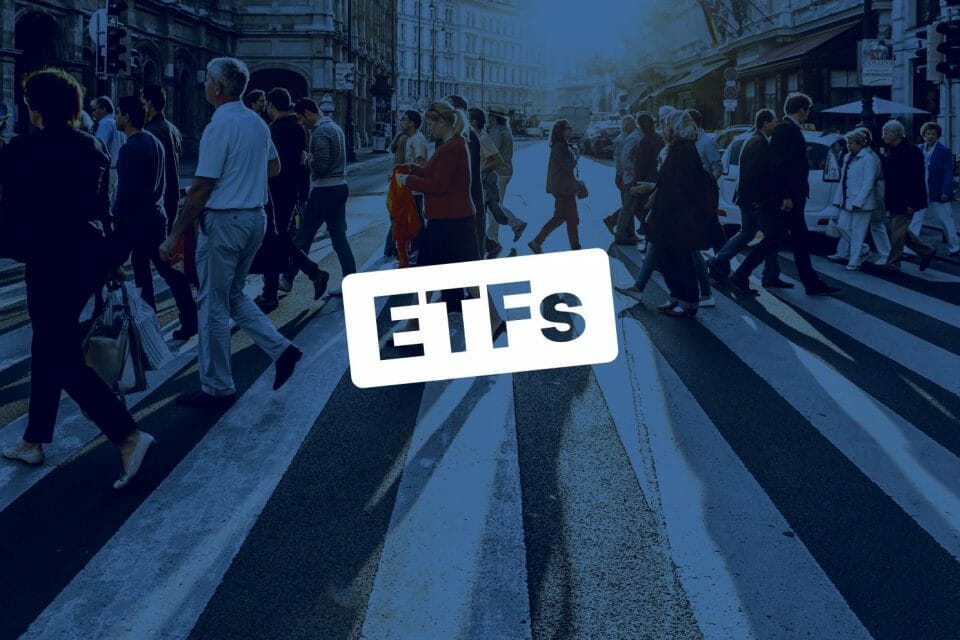ETF Must-Read: Top 25 ETF-Related Questions Answered

ETFs are great ways to build your own low-cost diversified portfolio easily.
There are hundreds of ETFs mentioned on Stockchase. If you are searching for some specific ETF, have a look at the recently published mega-list of the latest ETFs mentioned on Stockchase.
Investors looking for a shortcut and hands-off investing can jump directly to our post about All-in-One ETFs.
We also wrote about World and Emerging Markets ETFs, Country-Specific ETFs and the Most Popular ETFs.
Today, we went through hundreds of ETF related questions and answers posts on Stockchase and came up with the answers to the top 25 questions investors ask about Canada ETFs. Here are all the answers…
ETFs vs Mutual Funds?
Michael Decter tells us generally a mutual fund or ETFs give you diversity and you’re protected from downside by a particular stock. To see if those running the fund or ETF are thoughtful, check their long-term performance. The negative about mutual funds is they charge a high fee (an MER of 2-2.5%). That’s why ETFs are popular. Also look at what’s held in the mutual fund or ETF: do you know these companies?
Should I go with ETFs or a Financial Advisor?
According to Investopedia, more than 80% of advisors use ETFs and recommend them for client. If you want a totally hands-off approach, one could invest with all-in-one ETFs or the Canadian Couch Potato investing strategy. The most elite fund managers are outpaced by the S&P500 92% of the time. Financial advisors serve more as a coach that will help you establish your risk profile and asset allocation and stick with it. They will help you go through tough times and convince you not to make emotion-based decisions. You should decide for yourself if a financial advisor is worth paying for.
ETFs vs Robo-Advisor?
A robo-advisor will usually invest your money into ETFs. Essentially, you’re paying the robo-advisor to rebalance your portfolio according to your established risk profile and asset allocation. Tools like Passiv or Wealthica can help you effortlessly rebalance your portfolios if you want to invest with ETFs and you prefer to avoid the robo-advisor fee.
Do ETFs drive stock prices?
Christine Poole thinks with passive investing, ETFs have to buy the names in the index and this drives the prices higher. There’s no discretion as to where you buy it, so it could be one factor why the large names keep going up. It goes the other way too. If there are redemptions, the prices can go down.
Can you recommend a semiconductor ETF?
Kim Bolton owns a few key companies in semiconductor, about 11% of his portfolio. He uses the SOXX ETF to provide liquidity when he needs it.
Do the new swap ETFs have the same tax advantage?
Horizon has changed the structure of these swap ETFs into a corporate-class share structure (mutual funds do this) after Revenue Canada said they can’t change distributions into capital gains anymore. This is still an ETF and doesn’t effect the fee. But will CRA allow this going forward? We still don’t know.
Is there a 5G ETF?
There is FIVG-N. Global X Internet of Things (SNSR-Q) and NXTG could also be other 5G ETFs. John Hood would recommend to buy the individual stocks. as the universe of the 5G stocks is too small.
Do covered call stocks and ETFs actually protect on the downside?
John Hood notes that covered calls offer little protection on the downside except the covered call premium of 3%. He likes covered calls, but they confuse retail investors. When markets tanked in Dec. 2018, he sold covered calls and bought stocks.
Can you recommend A US ETF in infrastructure or utilities?
Vanguard Utilities ETF (VPU-N) holds around 80 US utility companies. ZWU-T holds Canadian as well as American utilities.
Harvest Equal Weight Global Utilities Income ETF (HUTL-T) is another option.
Can you recommend a European ETF?
ZEQ would be a good choice for a European ETF according to David Cockfield.
Can you recommend a Bond ETF for a retirement portfolio?
Stan Wong says XSB-T is a basket of mostly investment grade corporate bonds. 44 basis points expense ratio. For high-yield bonds, you want to own most US bonds. He owns XHY-T which is hedged to the CAD.
Should I buy a covered call ETF?
According to Stan Wong, for covered calls, look at your thesis on the markets. If you think the market’s going up, better to own the underlying securities. If the market’s flat or going down, covered calls make sense. He prefers the securities. But if you twist his arm, it could make up a portion of your portfolio. The utilities ETFs could make sense, global high dividend, US high dividend, or hedged Dow Jones.
Why would I hold a bond ETF?
Paul Gardner says the one benefit of holding a bond ETF, the MER has come down sharply — 0.10%. Over the next 5 years he anticipates a liquidity crisis to come. The lack of liquidity when bond sell orders come in will negatively impact bond ETFs. You are never wrong laddering bonds in your portfolio. You are better off owning an ETF than a mutual fund — due to the fees taken by the managers.
S&P Inverse ETF?
Anything that is inverse or leveraged requires caution and he advises only highly sophisticated traders use these. HIU-T is an inverse S&P ETF in Canada. Volatility makes them erode over time, so be careful.
Taxable ETFs or US holdings in Canadian registered accounts?
No. The US government charges a 15% withholding tax. There may also be some European withholding tax that is not recoverable. Instead, buy a Canadian-domiciled ETF that holds American stocks.
VDY vs XEI ETF?
VDY and XEI is very similar and their prices track closely. VDY tends to hold higher financial sector exposure, where yields are generally higher. Whereas XEI holds the highest yield payers on the composite Index. He also likes XDIV which has the lowest MER (0.11%). It holds “quality” holdings, using an algorithm to pick higher ROE, lower levered companies with earnings stability. Daniel Straus.
Should I buy Canadian Bank shares or a Canadian Bank ETF?
Michael Sprung says that as a portfolio manager, he prefers to use his expertise to pick individual stocks. An ETF gives you the group and no ability to outperform.
A protection strategy assuming a 20% correction before spring?
First, take profits after a fantastic 2019, then reposition your stocks/bonds ratio, buying more bonds to make your target mix (i.e. 70/30 stocks/bonds). John DeGoey is moving a third of his equities into inverse products–like an ETF that rises when markets fall (see his top picks) but this is risky. Investors really feel the pain of a drawdown–people are emotional and irrational. So, probably in the next two years, the market will fall and an inverse product will go up. This is playing defence.
Am I giving up too much growth?
If you maxed out your portfolio, which is nothing but ETFs, including 40% ZWU, ZWE and ZWS–all covered call ETFs, John DeGoey thinks that yes, you gave up some returns in 2019, because of the covered calls. But in 2020 you need to play defense, so hang onto those ETFs. Covered calls are defensive.
Do a put option on a silver ETF to capture more momentum?
According to John. DeGoey, No. This is purely speculation. Gold has done very well, and so has silver. You can invest in silver as a proxy for gold.
Can you recommend a good ETF for income?
ZWB is a good ETF for income. Only 50% is used with the covered call, so you still have 50% for growth. The covered calls provide better income, somewhere around 5.5%. Though you don’t get the tax benefit in a TFSA. The XSP is another good one.
Where can I buy ETFs commission-free?
Try Questrade. Here is our Questrade Review.
ETFs for a RESP?
John Hood likes EAFE ETFs like XIN-T because they have Japan, Australia, Asia, and the larger European countries. The only thing is, he doesn’t look at ESG-T unless his clients ask him to.


